This February, LET’S LEARN ABOUT…the Lunar New Year!
ACM wishes everyone a Happy Lunar New Year! An important Asian festival lasting 15 days, the Lunar New Year marks the end of winter and the arrival of spring. Singapore observes the first two days as public holidays; this year, they fall on 12 and 13 February.
Celebrating Lunar New Year
Many Asian communities all over the world view the start of the lunar year as an important festival. Family members travel to their parental home for a reunion dinner on the eve of the Lunar New Year.
It's an exciting time of the year. Children can get to eat new year snacks such as pineapple tarts, have sumptuous steamboat, and, in Singapore and Malaysia, lo hei (a salad dish tossed with slices of raw fish, vegetables, and seasonings) and bak kwa (dried savoury sweetmeat that traditionally takes the form of thin square slices and is usually made from pork). Most will also get a new haircut and wear new clothes in auspicious colours like red or gold.
The highlight for many children is collecting "angpows" – traditional red packets containing money, from parents and other adults. When receiving an angpow, a child should take it with two hands, and should say an auspicious phrase or two in return. Some parents might even slip an angpow, called 压岁钱 ("ya sui qian"), under their children’s pillows to bless them while they sleep.
On the eve of the Lunar New Year, many children stay up past midnight to welcome the new year. Some believe that the longer the children stay awake, the longer their parents‘ lives will be.
12 Animals of the Chinese Zodiac
In Chinese culture, every year is represented by a zodiac animal. There are 12 animals that repeat in a 12-year cycle. People are thought to share similar characteristics with the zodiac animal representing their birth year. 2021 is the Year of the Ox, which is the second animal of the zodiac. People born under this animal are said to be strong, hardworking, dependable, and caring. Do you know anyone born in the Year of the Ox (1949, 1961, 1973, 1985, 1997, 2009, 2021)?
The Chinese zodiac goes in this order: Rat, Ox, Tiger, Rabbit, Dragon, Snake, Horse, Goat, Monkey, Rooster, Dog, Pig.
How was this order decided? One popular story has it that the Jade Emperor announced that the first 12 creatures to report to him at his palace would be rewarded with a year named after them. The animals all raced to be first! The rat was riding on the ox so it could cross the river more easily. Just before the palace, the wily rat jumped off the ox and dashed in to win the race! The kind ox, who forgave the rat, came in second. The rest of the animals entered the palace in the order above.
Symbolism of ox, cow, bull, buffalo
In Chinese, the same character 牛 (niu) is used for ox, cow, bull, and buffalo. In Chinese culture, the ox is a valued animal because of its role in farm work, ploughing the rice paddy fields and transporting crops and people. The ox is also a powerful symbol across Southeast Asia, representing wealth and status.
In many cultures, cows provide milk and symbolise fertility and nurturing. In some Hindu societies, cows are considered holy animals, and are not slaughtered nor eaten for food.
Bulls are symbols of strength, determination, and fearlessness. In some Southeast Asian cultures, including Indonesia, Malaysia, and Thailand, water buffaloes are valuable for their work in the fields. They are also used as transportation and provide milk and meat. In Vietnam, water buffalo are appreciated for their hardworking, diligent, and gentle qualities. It is the national animal of Vietnam.
OBJECTS IN ACM COLLECTION
To celebrate the Year of Ox, let’s take a look at some ox-related objects in the ACM collection.
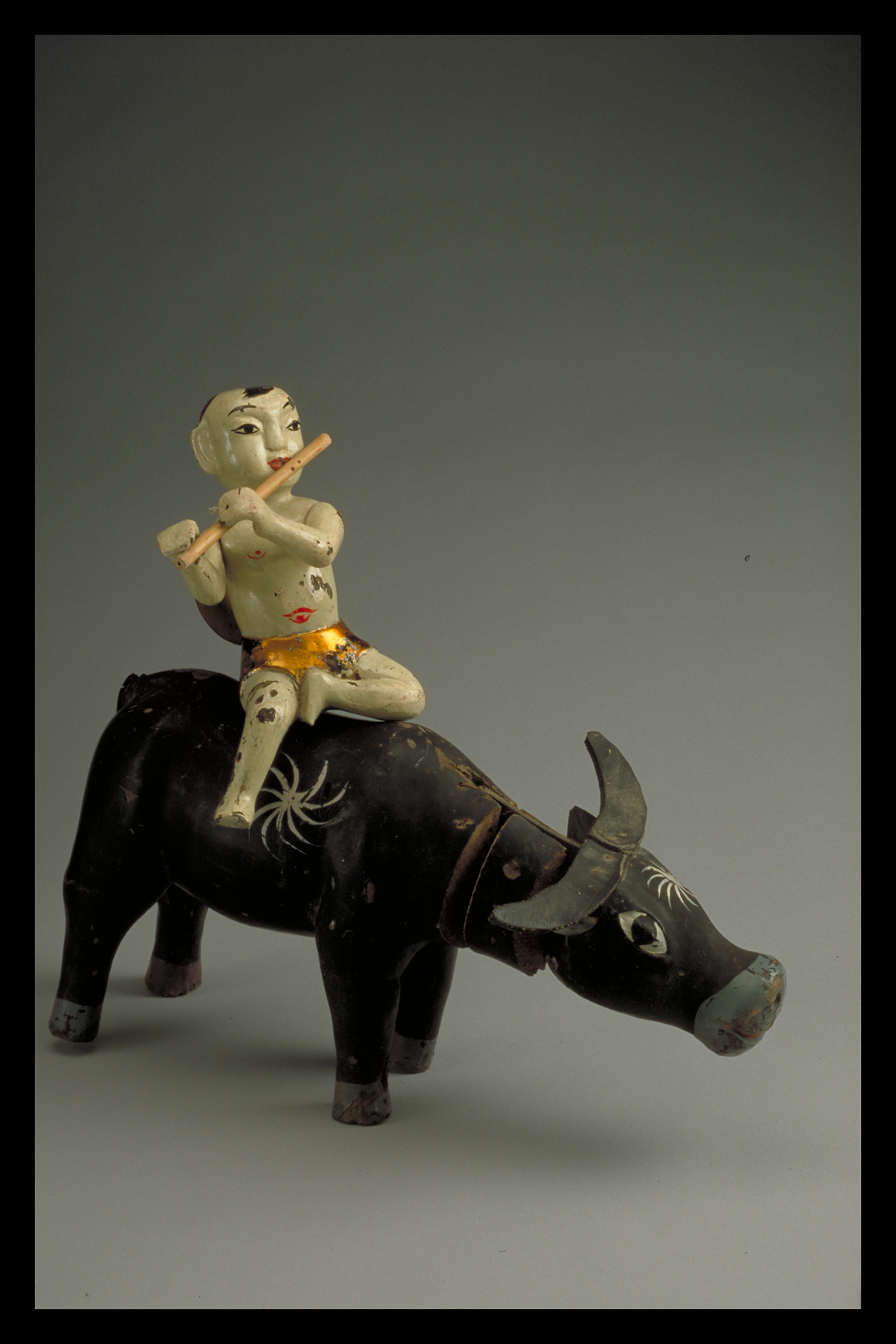 |
|
Water puppet: Boy on a buffalo
Vietnam, Hanoi, around 1996
Wood, rubber
2001-01189
|
This boy on a buffalo is part of a set of puppets that includes a master of ceremonies, a dragon, lion, and a fairy. The boy has moveable parts and is colourfully painted. The buffalo’s head is joined together by a strip of rubber-tyre inner tube – a clever way of recycling materials!
Water puppetry began about 900 years ago, or maybe even earlier as a folk art in the rice-farming villages of northern Vietnam. Performances take place in shallow pools, and the puppets are controlled by rods below the surface of the water.
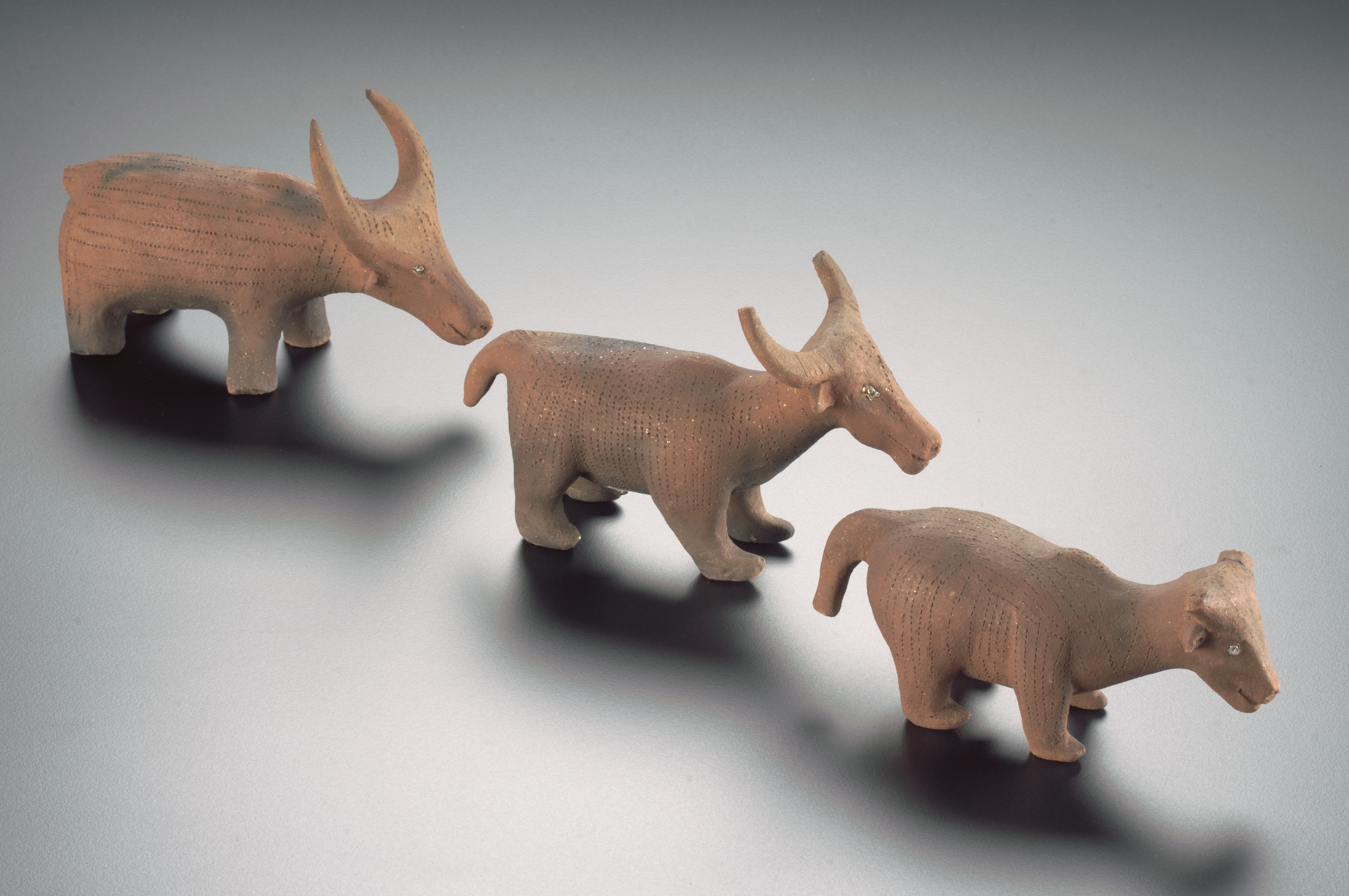 |
|
Three miniature buffaloes
Malay Peninsula, Kelantan, early or mid-20th century
Earthenware
C-0484
|
These miniature buffaloes from Kelantan are probably children's toys. They were moulded by hand. If you look closely, you can see they have been decorated with dots and short lines, carved into the clay body. And white material or pigments were used to make the eyes stand out.
In Kelantan, as in many regions of Southeast Asia, water buffaloes are extremely important in wet rice cultivation as their splaying hooves allow them to move and work in the paddy field without sinking into the swampy ground.
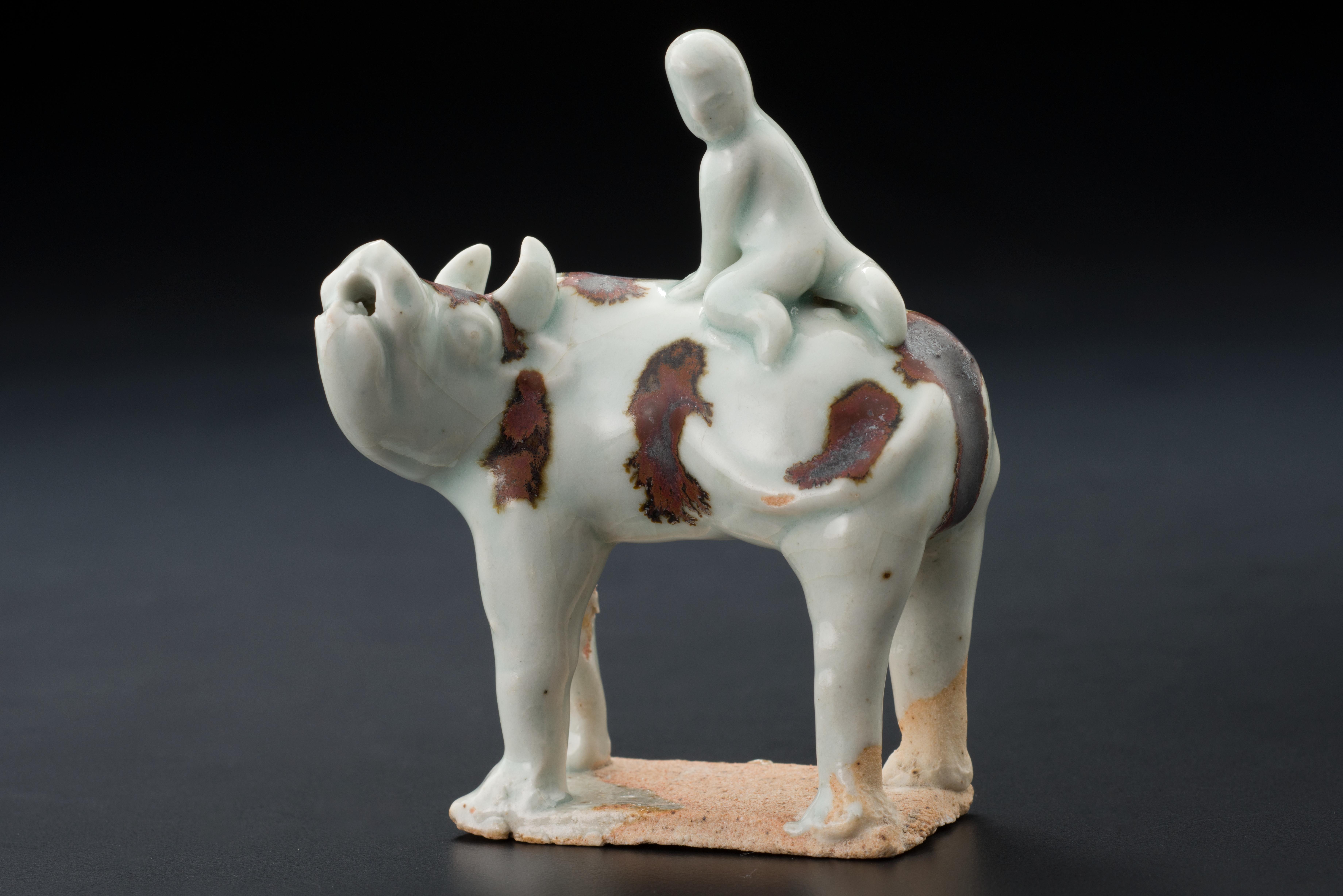 |
|
Water dropper in the form of a boy on a cow
China, 13th or 14th century
Porcelain
2010-00365
|
This water dropper may have been used by a Chinese artist or writer. Containers like this, in many different shapes, are used to carefully add water needed to prepare ink for calligraphy or painting. Ink came in solid sticks or cakes, and had to be mixed with water before it could be used for writing or drawing.
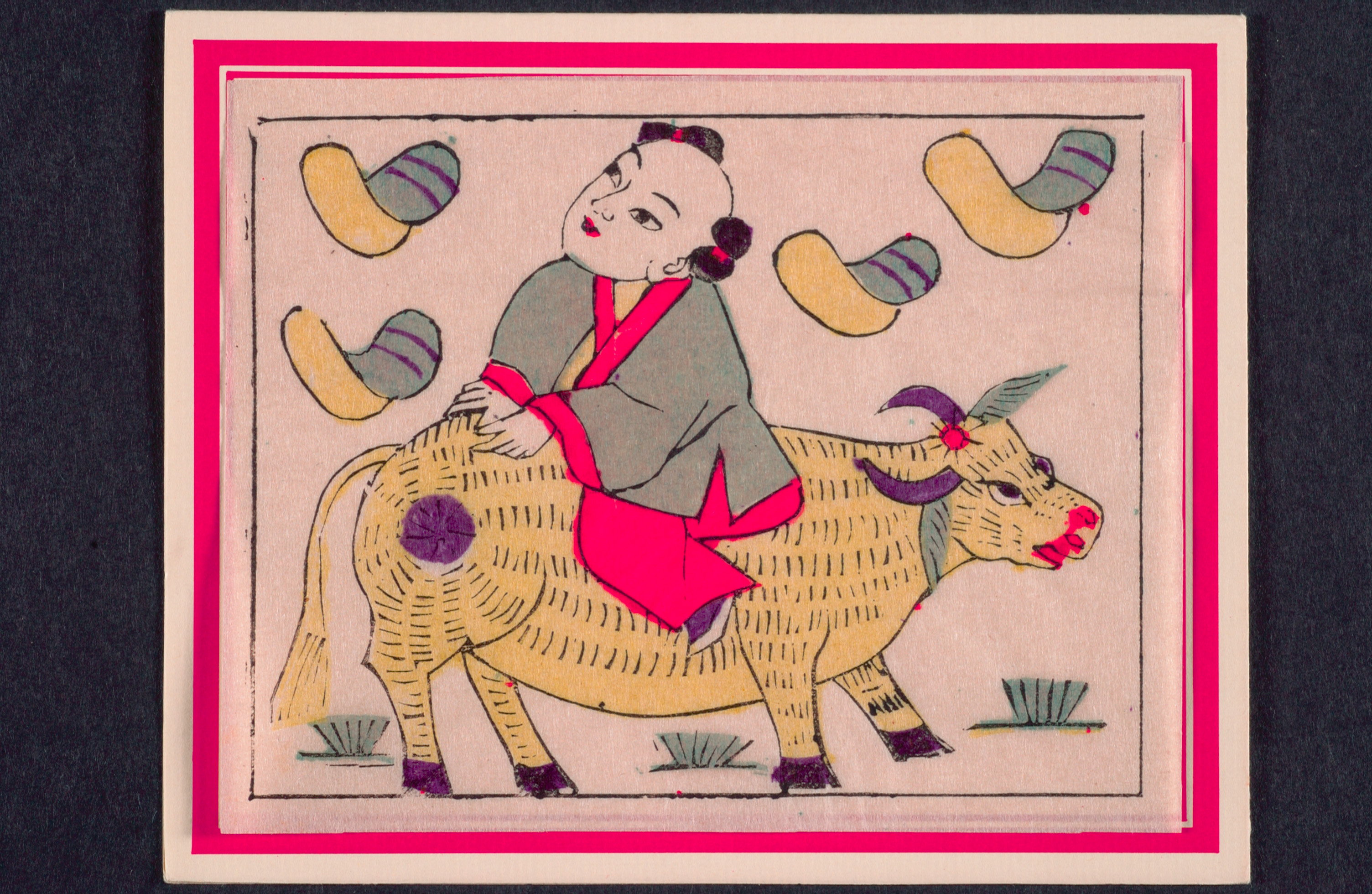 |
|
Oxherd, ox, and silver Ingots
China, Shandong province, 20th century
Ink on paper
XXXX-01335-006
|
This colourful print is part of a set of notecards. The person sitting on the ox is surrounded by silver ingots, symbolising abundance of wealth.
In Chinese culture, the ox is regarded as an auspicious animal. Because of its role in agriculture, the positive characteristics of hard work and honesty are associated with it.
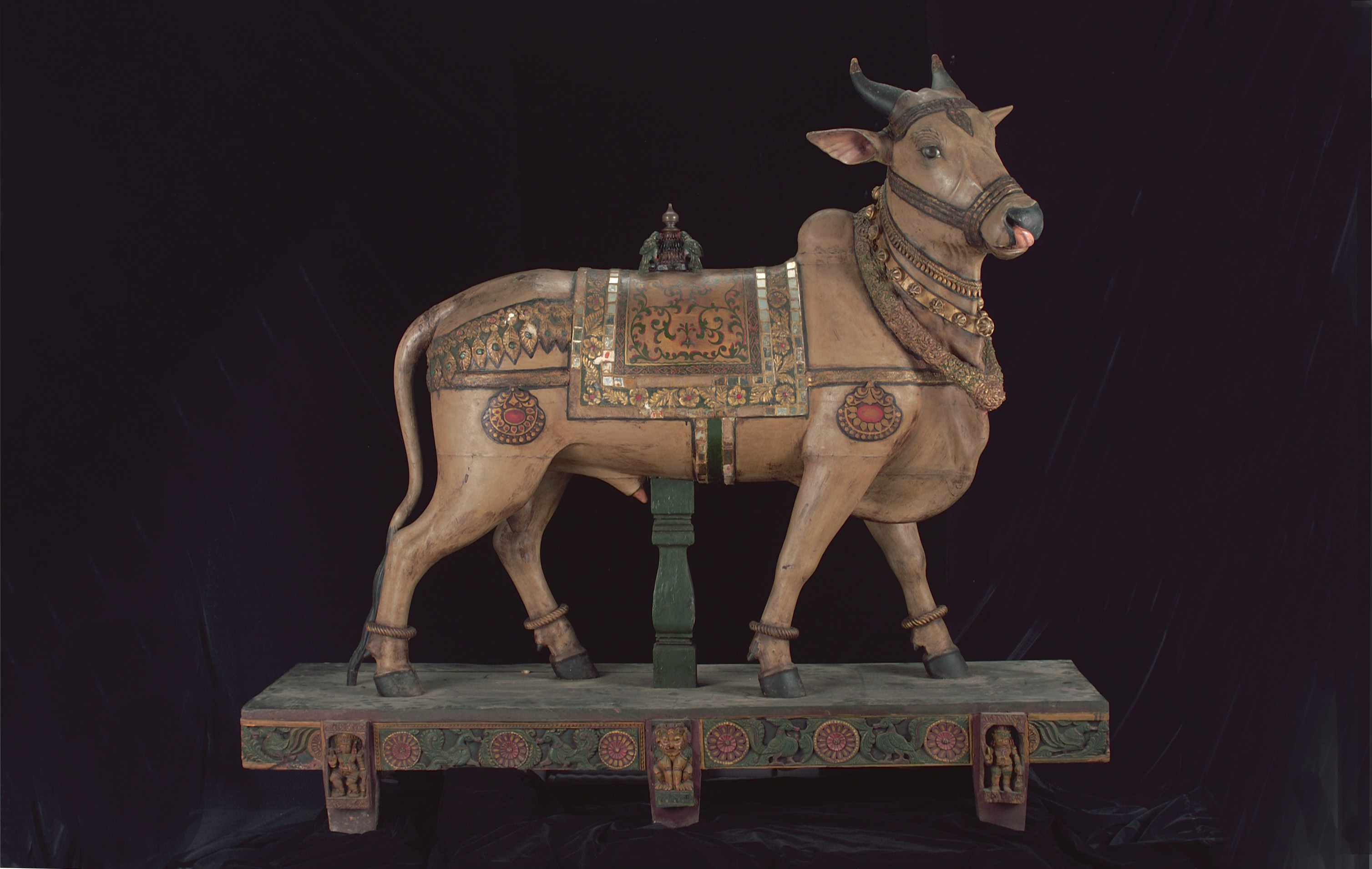 |
|
Bull palanquin (processional vehicle)
India, Tamil Nadu, late 19th or 20th century
Wood, paint
1995-01825
|
A bull called Nandi is the "vehicle" of the Hindu god Shiva, aiding his journeys through heaven and earth. In southern India, bull sculptures like this were used to carry images of Shiva and his wife Parvati in ceremonial processions around town during festivals.
The sculpture is realistically painted, capturing the animal as well as its saddle, necklaces, anklets, and other decorations. The artist has shown the animal in a tender moment too – notice its tongue flicking out of its mouth and ears perked up.
CREATE
Make your own paper ox. Following the example below, transform a paper envelope into an ox.
- Cut out different shapes for the nose, ears, and horns using construction paper.
- Paste the ears and horns to the front of the envelope.
- Finish it off by pasting the nose onto the tip of the triangular fold on the back of the envelope.
Tag us @ACM_SG #LearningatACM for a chance to get your creation featured.
EXPLORE
Head to NHB’s one-stop heritage portal Roots.sg to read more about the objects featured:
Water puppet: Boy on a buffalo
Bull palanquin
Want more of these resources? Come back to learn new things every month.
Missed a monthly post? Not to worry, we keep past topics here for you.
What else would you like to learn about? Tell us here.
There’s more!
Check out other videos and download e-resources inspired by the objects in ACM’s collection.